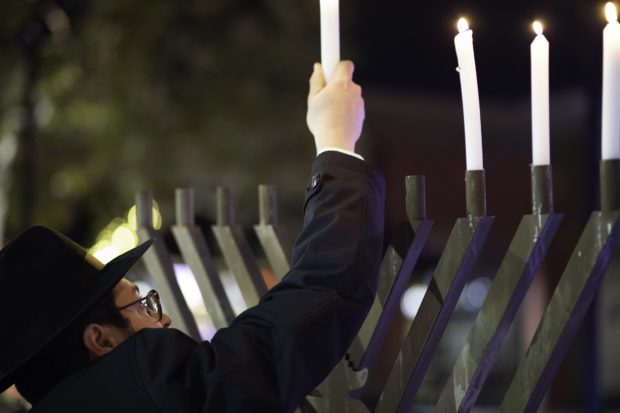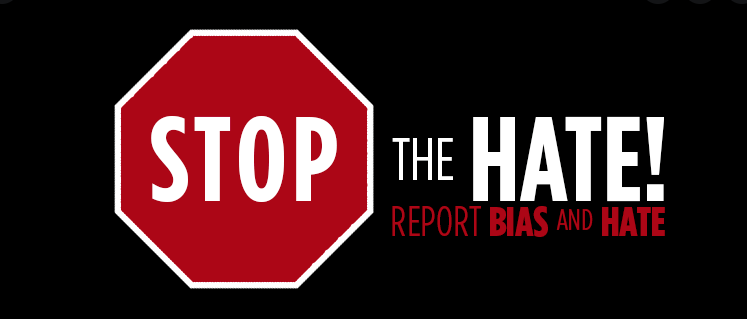
It is shocking to watch the rise of antisemitism in America these days. As an American Jew who escaped from Nazi Europe in the 1930s, my first thought is “Not here too!” My next thought, which might be yours as well, is “What can be done?”
Knowing the facts about Judaism is a tool against antisemitism in everyday life. Of course, Jewish people wish to be better known for the things in which we take pride than just for the persecution that has occurred.
Judaism has a long history. When we celebrate the Jewish New Year, Rosh Hashanah, this September, it will be the year 5784 on the Jewish calendar. At just 2.5%–3% of the American population, Jews have been a significant part of the landscape since the origin of this country.
The Jews are called the people of the book. Jewish parents generally make great efforts to support the education of our children, promoting their learning at every stage. As you might know, we celebrate the maturity of 13-year-old sons and daughters with a Bar (or Bat) Mitzvah where they are expected to read a section from the Old Testament in Hebrew and discuss it.
A recent survey of more than 800 Jewish adults in the San Francisco Bay Area demonstrates a wide variety of attitudes toward their own Jewish identity. As quoted in the December issue of J Weekly, half of those interviewed currently identify with a particular Jewish form of observance (Orthodox, Conservative or Reform) while a quarter say they are more secular, that is, primarily Jewish through family heritage.
Seventy-six percent said that the Holocaust has shaped their Jewish identity. And 32% experienced or directly witnessed antisemitism in the last three years. Another 64% stated they felt uncomfortable about assumptions others made about them because they are Jewish.

Over the past century, there has been some debate about whether Jews are a race, which Hitler and the Nazis put forward in their ideology. Today, Jews are likely to be seen as an ethnic group, as well as a religion. One thing is clear: Antisemitism festers just like any other form of racism.
Considering your own informational background is another step in combating antisemitism. What did you hear and what were you taught early on about Jewish people? What stereotypes were you exposed to in the past? Are you ready to do some reevaluation of your own?
Taking notice of remarks that sound antisemitic is a further step. You can make it a practice to call those out instead of letting them go. Such comments are a way of “othering” a minority. Challenging stereotypes within one’s circle of influence can make a difference.
Promoting a more just and fair society is a way to provide countermeasures against racism. To the extent that groups of Americans feel alienated and demoralized, our nation is at risk of feeding racist movements.
We need governmental actions that support family life, equalize job opportunities, face up to today’s housing crisis and more. And we need to vote accordingly.
Thomas Jefferson famously said, “the price of liberty is eternal vigilance,” and it could be added, continuous awareness of social issues. We also need to demonstrate to our children and grandchildren that we ourselves are taking on tasks that improve our society, be they small or large.
In trying to understand this subject, what are possible contributing factors to antisemitism? One can be the ego boost of seeing oneself as “better than.” Also, people who are suffering discontent with their own situations in life might get a kind of relief from assigning blame to a minority group. These “chronic blamers” avoid analyzing their own problems for realistic causes and possible solutions.
Antisemitic group leaders might actually gain significant benefits: creating group cohesiveness, offering a sense of belonging that has been absent in the past and even propagandizing a future terrorist force.
Prejudice leaks into a community through rumor, misinformation and disinformation. Unfortunately, we had an organized incident in Clovis and Fresno just last December when antisemitic fliers were distributed in people’s yards one evening. The police responded, explaining that this action is not a crime in the United States. (In Germany today, such an act is illegal.)
Holocaust studies are now part of the California school curriculum. Young people are learning how oppression occurring in Europe led to World War II. While it is painful to expose students to this history, it was part of our modern reality.
My own family’s experience of the early days of Nazi domination in Europe left a strong imprint on my life. In 1938, the German army occupied Austria. (Films of that day show a welcoming parade rather than public resistance!)
I was a preschool child, protected at home. My eight-year-old brother was subjected to harassment by a Nazi teacher and soon was expelled from school for being Jewish.
My physician father had his medical license revoked and was fired from a public health job for being Jewish. My pediatrician mother also had her license revoked, but continued her practice covertly with house calls to Jewish children affected by a scarlet fever epidemic.
All Jewish bank accounts were declared to be property of the Reich and sent to Germany.
My father began to hide when Jewish men were being arrested and sent to Dachau. My family was urged to get out of Austria, but what country would accept us as refugees? After much difficulty, the four of us escaped together. We were among the relatively few who were admitted to the United States. Many of our relatives in Austria and Poland were not as lucky.
This year, we are fortunate in Fresno for being chosen to receive an exhibit directly from the U.S. Holocaust Memorial Museum during November and December. The exhibit, titled “America and the Holocaust,” will be housed at the downtown public library at 2420 Mariposa Street. Many ethnic groups are planning presentations during the exhibit to educate the public regarding their cultures. Watch for more information as the dates get closer.

A really nice essay.